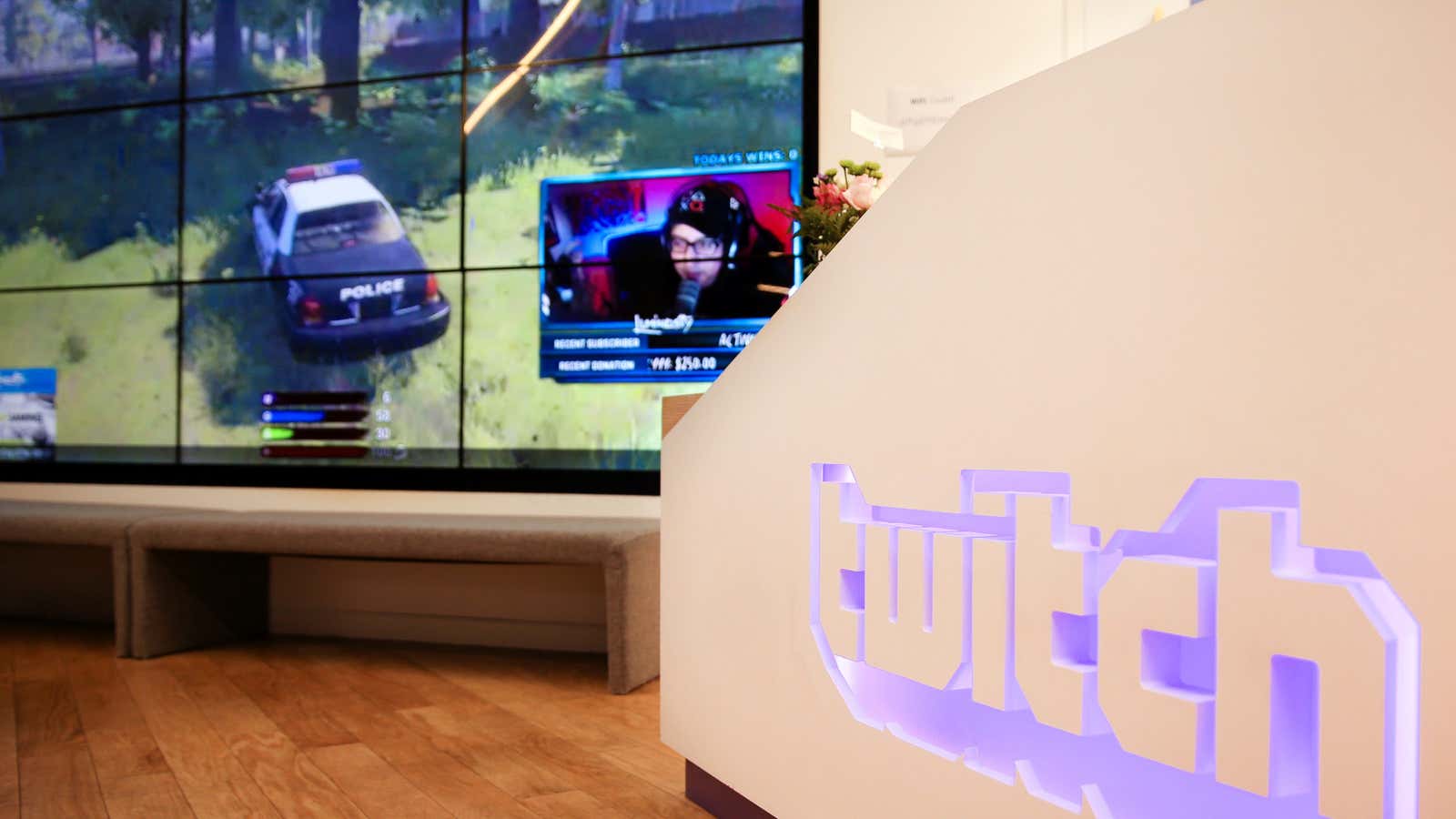Twitch may have started off as a platform for vicariously consumed spectacle—for watching other people shoot zombies or race cars as they played video games. When the pandemic locked people down in their homes last year, viewership doubled. But mostly, users were logging on for the far less dramatic sight of watching people sit in front of their webcams and talk.
New data from Stream Hatchet, which provides game-streaming analytics, shows that Twitch users spent a collective 6.3 billion hours on the platform in the first quarter of 2021, an all-time high. Within Twitch, the category called “Just Chatting“—the plainest possible description of its contents—accounted for 12% of all viewed videos.
In the third quarter of 2020, the category had become the most-watched on Twitch: 522 million hours of “Just Chatting” videos viewed. In the first quarter of 2021, that number ballooned further still, to 754 million hours.
Some of the videos on “Just Chatting” are still game-related: Users talking to their audiences about gameplay. But independent journalists use Twitch as well; during the US presidential election, Hasan Piker, a 29-year-old political commentator, became Twitch’s top streamer. One host on “Just Chatting” talks about ecological conservation; another dupes tech-support scammers and streams his deceptions on Twitch. Podcasters upload videos of their conversations on Twitch, then publish the audio as a podcast episode.
Often, though, users talk about anything that comes to mind. The most popular streamer on “Just Chatting,” who goes under the screen name Ludwig, once launched into a very angry-sounding monologue about the politics of Ireland. On average, around 43,000 people tune in to each of his livestreams.
Inveterate gamers on Twitch once used to ridicule users who were on the platform for all chat and no play—to the extent that Twitch’s rules used to discourage the talkie format altogether. Often, the users who talked to their audiences were women, which bred a particular kind of sexism on the platform. Then, three years ago, Twitch spun off this content into the “Just Chatting” category. Its numbers climbed steadily soon after, but they exploded in 2020—just the year in which everyone was looking for less by way of drama and more by way of personal connection and conversation.
